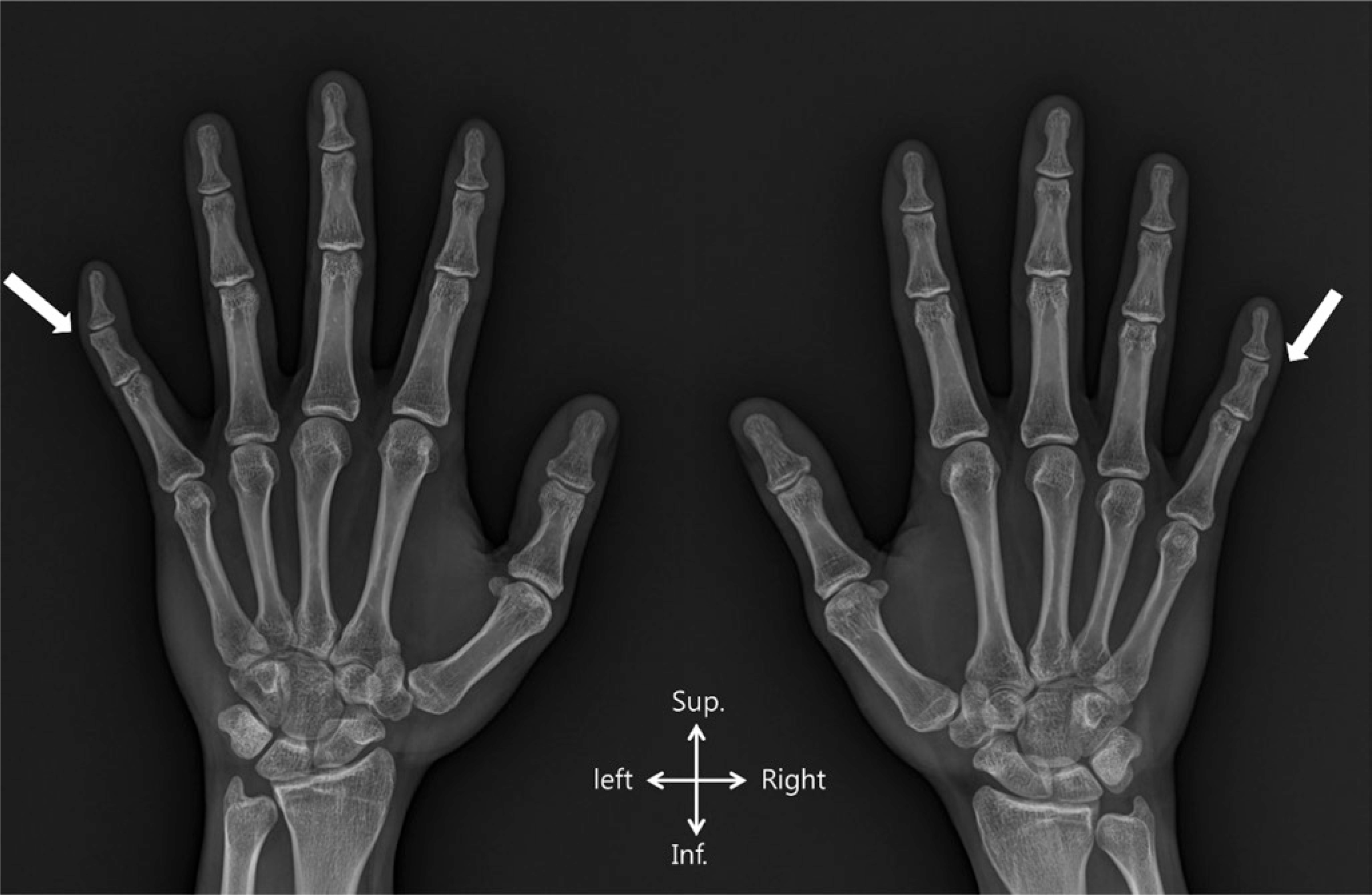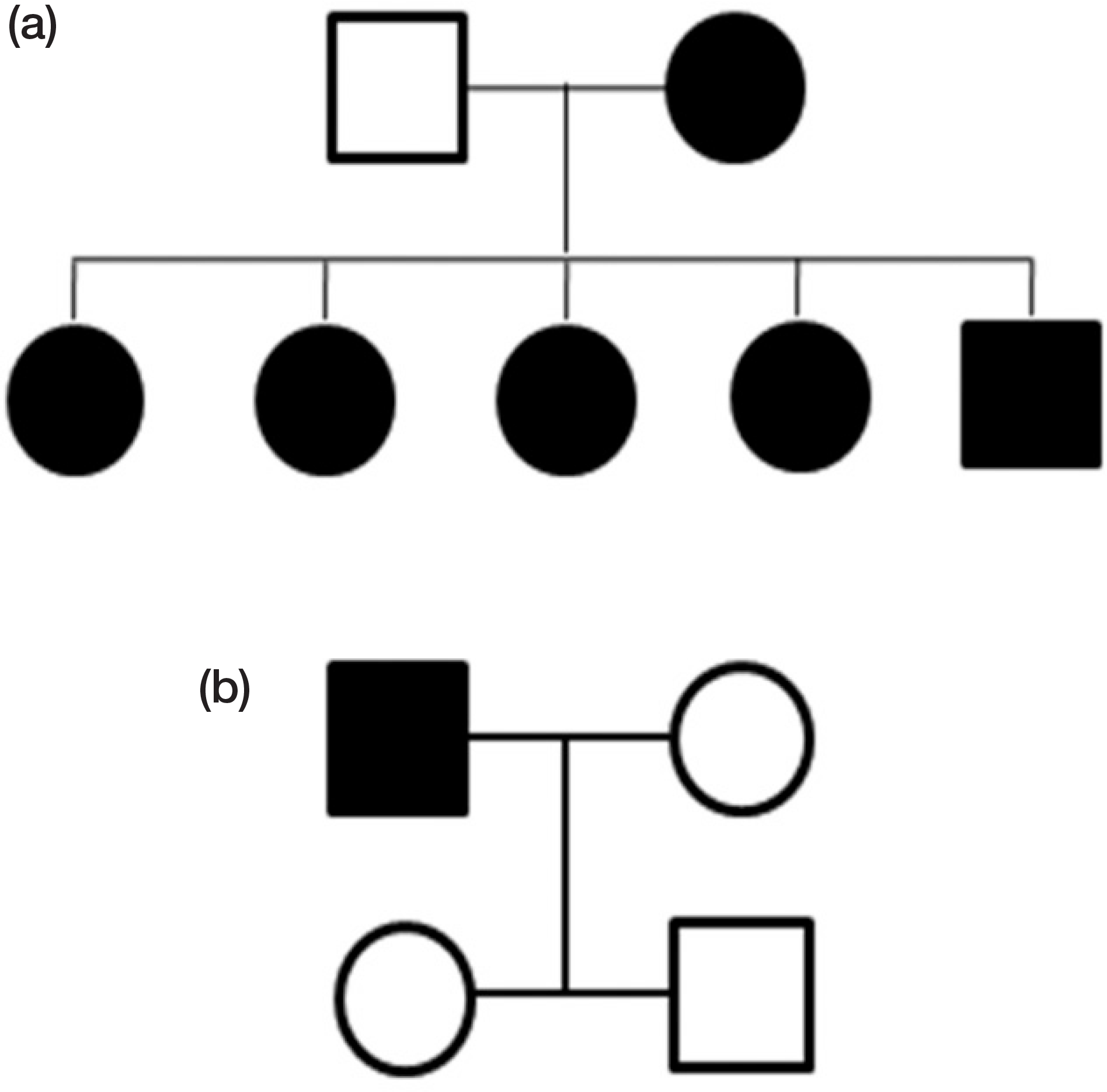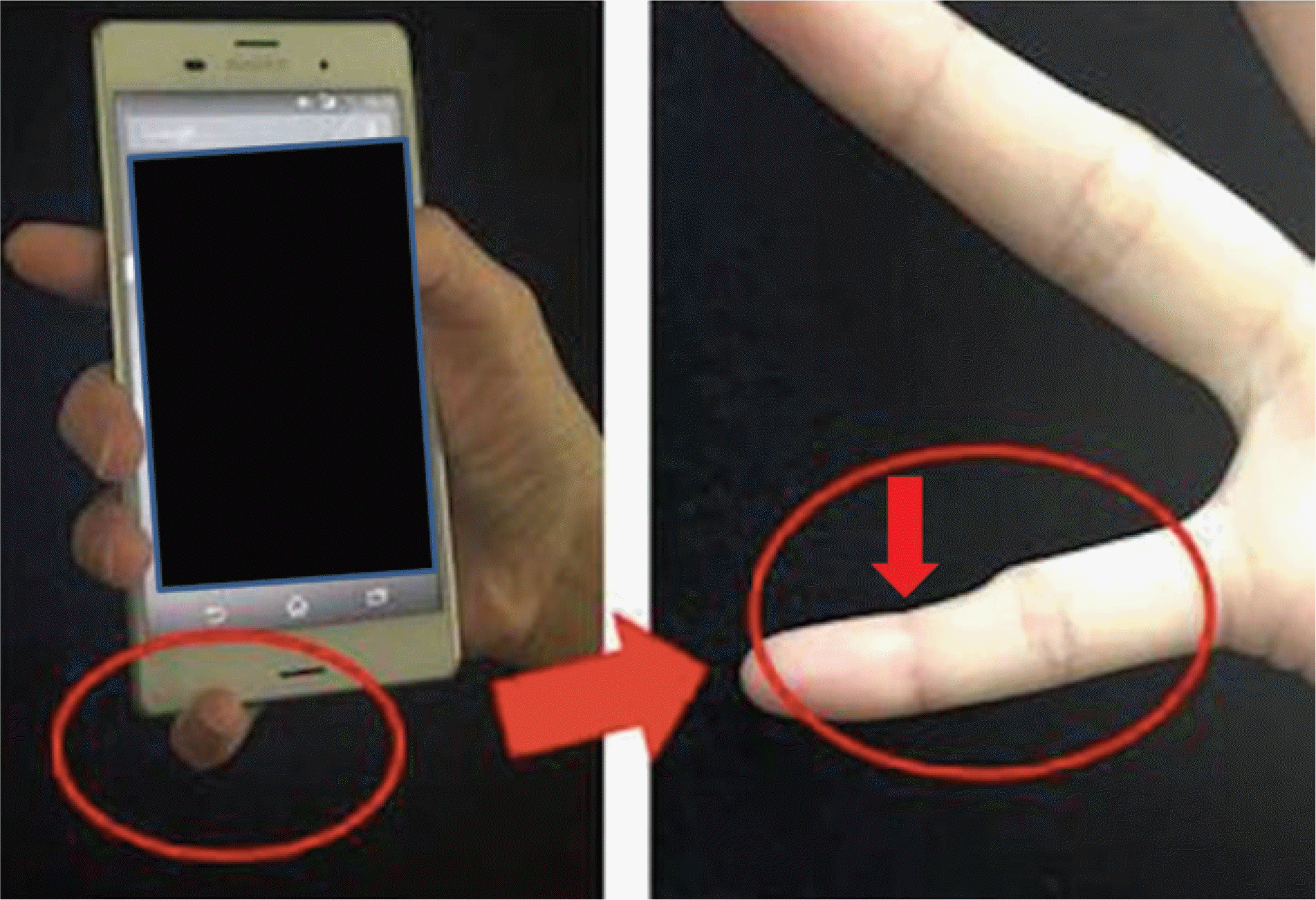Abstract
Clinodactyly, as rare congenital malformation, refers to a curvature of a digit in a radial or ulnar direction in the coronal plane. The abnormality is inherited as an autosomal dominant trait. And its frequency was low, however, it was higher by accompanying other congenital anomaly. In present study, the frequency and genetic characteristics of clinodactyly were investigated. In 100 family (382 peoples), clinodactyly was found in 4.7% (n = 18). All clinodactyly were bilateral and it was more frequent in female (6.8%) than male (2.6%), without statistical difference (p = 0.056). Its inheritance was autosomal dominant trait in 80% (4/5) families, however, one family did not have any inheritance pattern. We described the frequency and clinical implication of clinodactyly, and this description will be lead to an improved understanding of its spectrum and inheritance.
Go to : 
References
1. Al-Qattan MM. Congenital Sporadic Clinodactyly of the Index Finger. Ann Plast Surg. 2007; 59:682–7.

3. Leung AK, Kao CP. Familial clinodactyly of the fifth finger. J Natl Med Assoc. 2003; 95:1198–200.
4. Ravinshaker R, Bath AS. Distraction – a minimally invasive technique for treating camptodactyly and clinodactyly. Med J Armed Forces India. 2004; 60:227–30.
5. Kim JH, Lee WM, Ryoo NH, Ha JS, Jeon DS, Kim JR, et al. A Case of Partial Trisomy 15q25.3-qter. Korean J Lab Med. 2009; 29:66–70. Korean.

6. Lee SJ, Jeong JH, Cho SM. A Case of Pericentric Inversion of Chromosome 5 (p15.1q11.2). Korean J Pediatr. 2000; 43:1404–8. Korean.
8. Piper SL, Goldfarb CA, Wall LB. Outcomes of opening wedge osteotomy to correct angular deformity in little finger clinodactyly. J Hand Surg Am. 2015; 40:908–13.

9. Hersh AH, DeMarinis F, Stecher RM. On the Inheritance and development of Clinodactyly. Am J Hum Genet. 1953; 5:257–68.
10. Marden PM, Smith DW, McDonald MJ. Congenital anomalies in the newborn infant, including minor variations: a study of 4,412 babies by surface examination for anomalies and buccal smear for sex chromatin. J Pediatr. 1964; 64:357–71.
11. Baek GH, Chung MS, Park YB, Yoo KH. The relative incidence of congenital anomalies of the hand. J Korean Orthop Assoc. 1997; 32:796–801. Korean.

12. Bang SE. Reflex little finger, the cause is smartphone? The Seoul Shinmun [cited 2016 Jan 22]. Available from:. http://nownews.seoul.co.kr/news/newsView.php?id=. 20160122601018. Korean.
Go to : 




 PDF
PDF ePub
ePub Citation
Citation Print
Print





 XML Download
XML Download